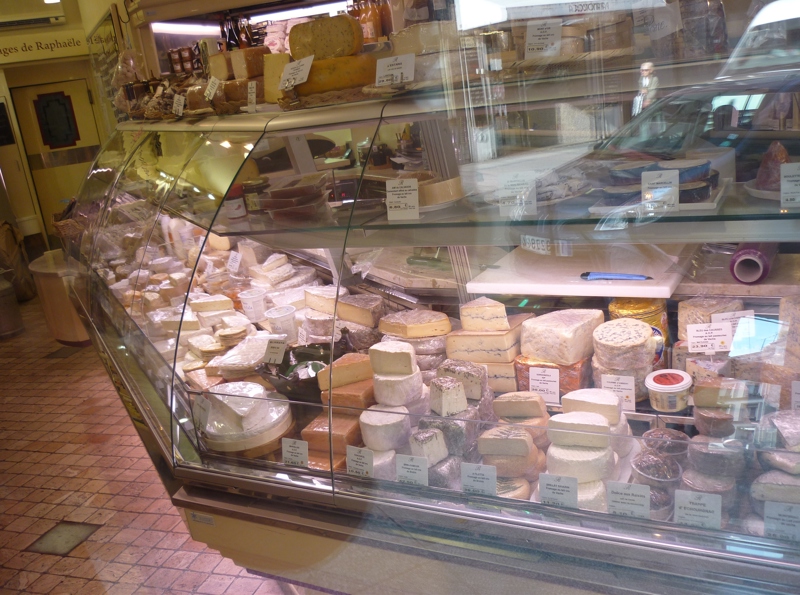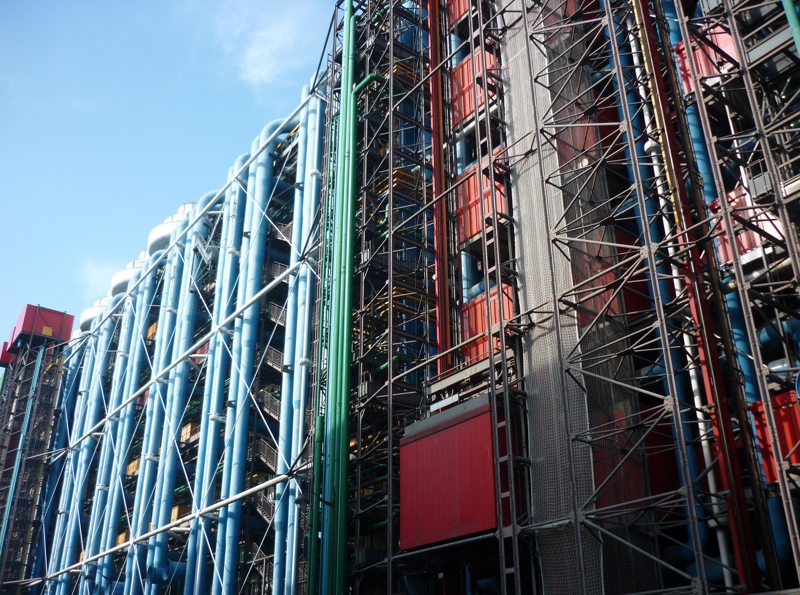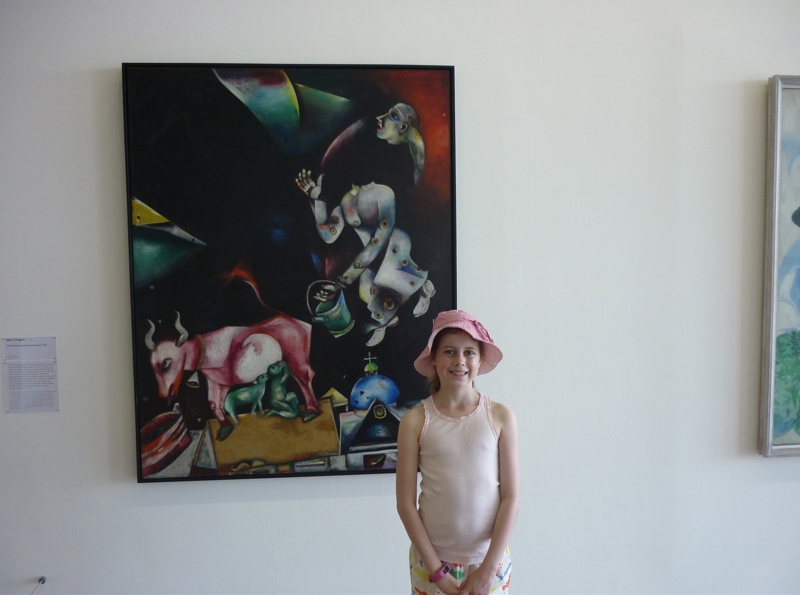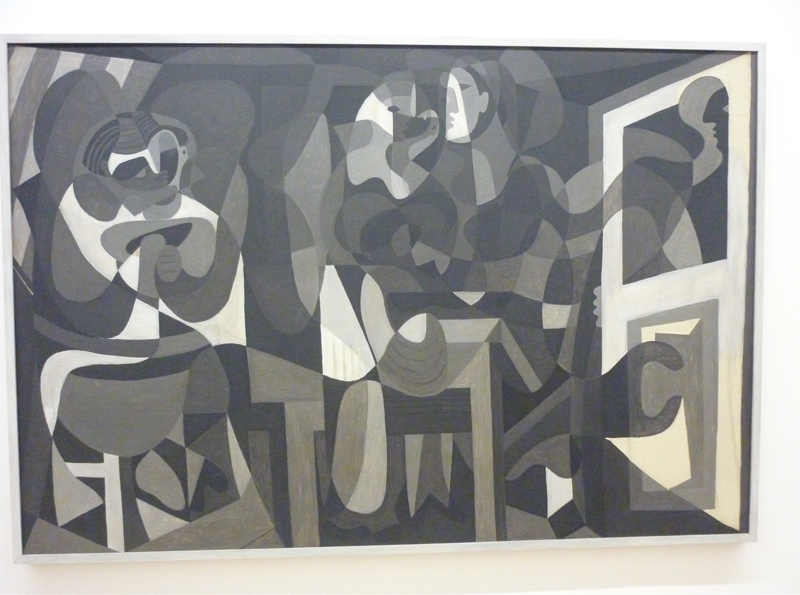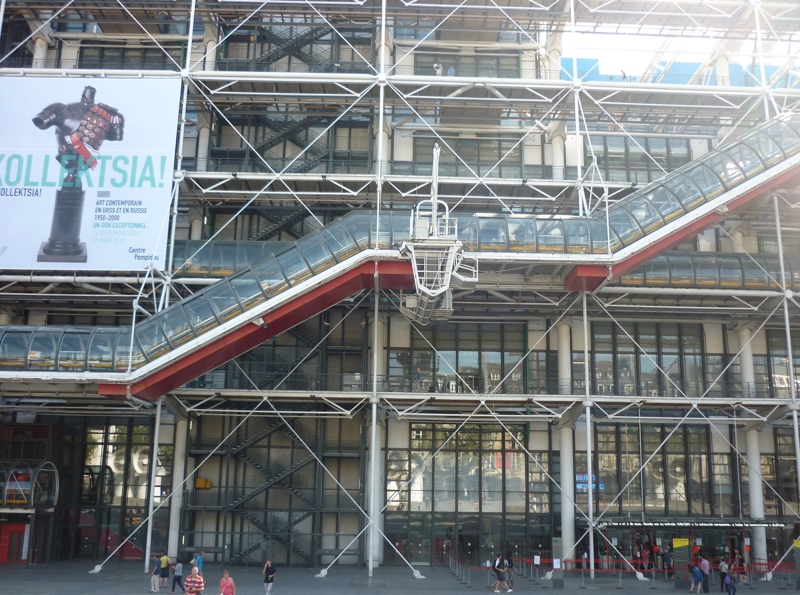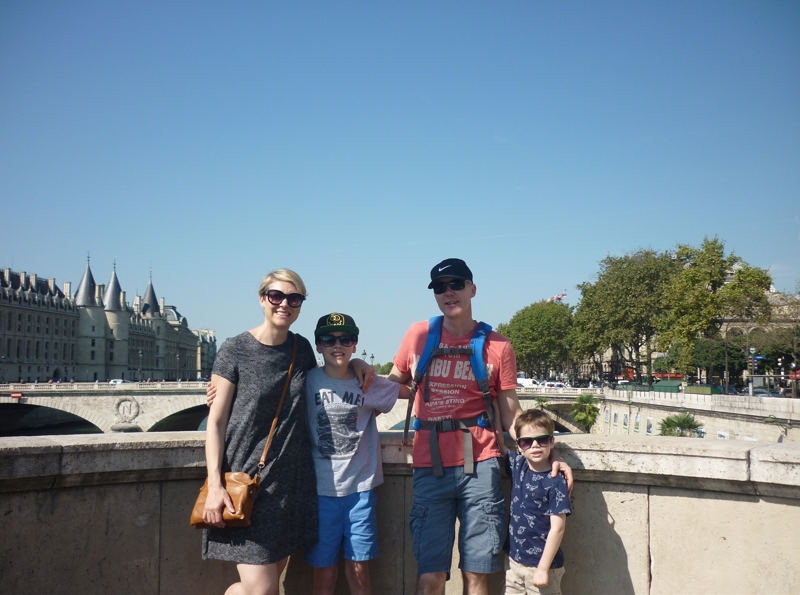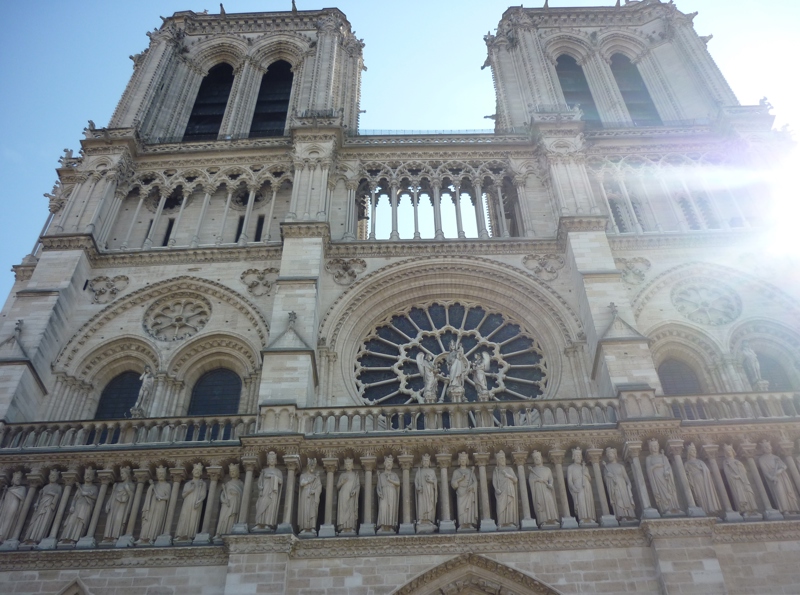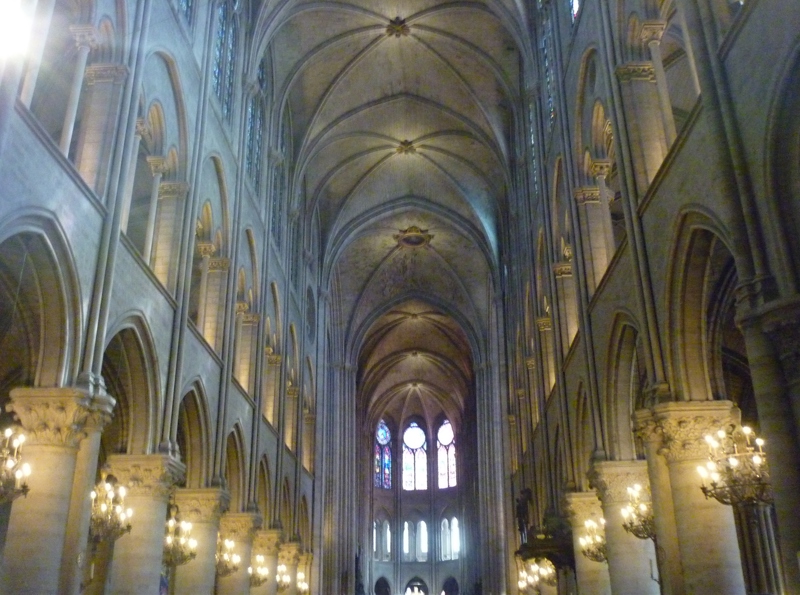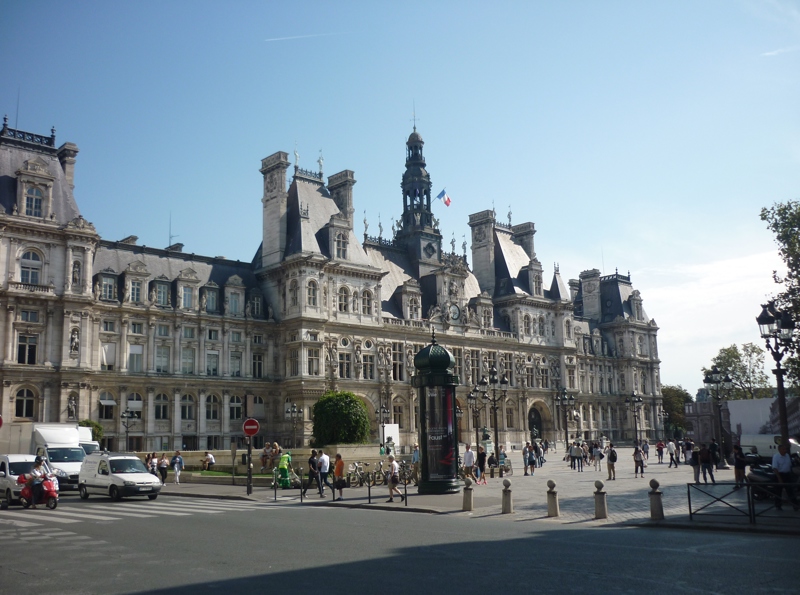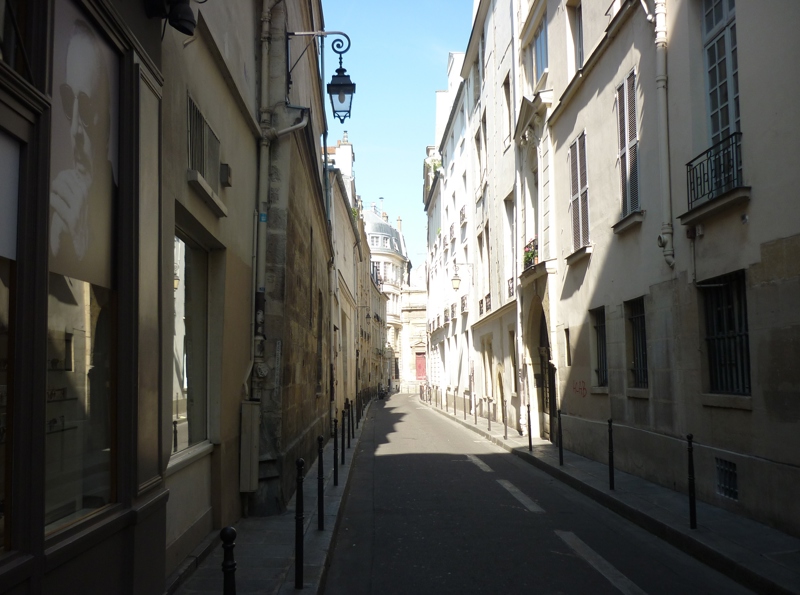Europe Trip
Today was again fine and 29 degrees as we set off soon after another carbohydrate heavy breakfast (croissants and baguette breakfasts do tend to tip the carb scales). Packed lunch in hand, today we wanted to explore the Notre Dame region, and we started by walking through the Marais, or Jewish Quarter again.
The whole Marais region is a little more upmarket then where our apartment is located: there are less bars and pubs, there are more designer clothes shops, and fine patisseries are scattered everywhere. If we had our pick of locations, the Marais would be our preference, although accommodation is usually priced accordingly.
Our first stop was the Pompidou Centre, the brainchild of former French president George Pompidou, who wanted to build a new multi-disciplinary cultural centre. The modernistic venue houses the main Paris library and a series of modern art displays. Whilst our Paris Museum pass provided us free entry to one of the galleries, we didn’t stay long as it didn’t really hold Oscar’s attention. There was still value in the visit – it's a great building to look at as all the services (eg air-conditioning ducts) are located on the outside of the building and painted bright colours. The main escalators are also outside the building, contained in glass tubes, giving the building “wow” factor both from outside and within. In addition, the top floor provides yet another great vantage point to view most of Paris. Though obviously not as high as the Eiffel Tower or Sacre Coeur, the Pompidou is close to the heart of Paris, allowing visitors to really pick out key attractions.
After Pompidou, we continued on foot towards Notre Dame. This huge medieval Catholic church sits on the small Seine island Ile de la Cite, in the cultural heart of Paris. Work commenced in 1163, however it wasn’t completed for another 200 years! The French-Gothic cathedral is 96 metres tall, and decorated with an amazing array of gargoyles and stained glass. Removing our hats as requested, we quietly moved around the body of the church, taking in the skill and craftsmanship dating back almost a millennium, and wondering at centuries of worship. Due to the queues we didn’t climb one of the towers as we had done 10 years ago, but still left satisfied that we’d again experienced one of Paris’ treasures.
Next on our list was La Conciergerie, a large building from the 1200s, once a prison and holding pen for those facing the guillotine. Most famous of prisoners was Mary Antoinette, beheaded during the one year reign of terror in 1793/1794, when over 2,000 prisoners were executed. There were varying degrees of comfort in the prison cells. If you could pay, you’d get a two person cell with bed. If you were famous, you were entitled to your own cell and desk. If not, the cells were massively overcrowded, stinking of urine and faeces, and full of disease.
Despite the horrible history and stark conditions of the cells, the building itself is quite beautiful, full of stone arches, domes and spiral staircases.
Giving Saint Chappelle a miss (thought the kids had seen enough churches for the moment) we returned home again via the Marais district, the kids eating ice-creams en route and us adults picking up some macaroons and tarts for once we arrived home. We relaxed for a couple of hours before dining at our favourite burger restaurant.
James Burnet
34 chapters
15 Apr 2020
Day 17
Pompidou, Notre Dame, Conciergerie
Today was again fine and 29 degrees as we set off soon after another carbohydrate heavy breakfast (croissants and baguette breakfasts do tend to tip the carb scales). Packed lunch in hand, today we wanted to explore the Notre Dame region, and we started by walking through the Marais, or Jewish Quarter again.
The whole Marais region is a little more upmarket then where our apartment is located: there are less bars and pubs, there are more designer clothes shops, and fine patisseries are scattered everywhere. If we had our pick of locations, the Marais would be our preference, although accommodation is usually priced accordingly.
Our first stop was the Pompidou Centre, the brainchild of former French president George Pompidou, who wanted to build a new multi-disciplinary cultural centre. The modernistic venue houses the main Paris library and a series of modern art displays. Whilst our Paris Museum pass provided us free entry to one of the galleries, we didn’t stay long as it didn’t really hold Oscar’s attention. There was still value in the visit – it's a great building to look at as all the services (eg air-conditioning ducts) are located on the outside of the building and painted bright colours. The main escalators are also outside the building, contained in glass tubes, giving the building “wow” factor both from outside and within. In addition, the top floor provides yet another great vantage point to view most of Paris. Though obviously not as high as the Eiffel Tower or Sacre Coeur, the Pompidou is close to the heart of Paris, allowing visitors to really pick out key attractions.
After Pompidou, we continued on foot towards Notre Dame. This huge medieval Catholic church sits on the small Seine island Ile de la Cite, in the cultural heart of Paris. Work commenced in 1163, however it wasn’t completed for another 200 years! The French-Gothic cathedral is 96 metres tall, and decorated with an amazing array of gargoyles and stained glass. Removing our hats as requested, we quietly moved around the body of the church, taking in the skill and craftsmanship dating back almost a millennium, and wondering at centuries of worship. Due to the queues we didn’t climb one of the towers as we had done 10 years ago, but still left satisfied that we’d again experienced one of Paris’ treasures.
Next on our list was La Conciergerie, a large building from the 1200s, once a prison and holding pen for those facing the guillotine. Most famous of prisoners was Mary Antoinette, beheaded during the one year reign of terror in 1793/1794, when over 2,000 prisoners were executed. There were varying degrees of comfort in the prison cells. If you could pay, you’d get a two person cell with bed. If you were famous, you were entitled to your own cell and desk. If not, the cells were massively overcrowded, stinking of urine and faeces, and full of disease.
Despite the horrible history and stark conditions of the cells, the building itself is quite beautiful, full of stone arches, domes and spiral staircases.
Giving Saint Chappelle a miss (thought the kids had seen enough churches for the moment) we returned home again via the Marais district, the kids eating ice-creams en route and us adults picking up some macaroons and tarts for once we arrived home. We relaxed for a couple of hours before dining at our favourite burger restaurant.
